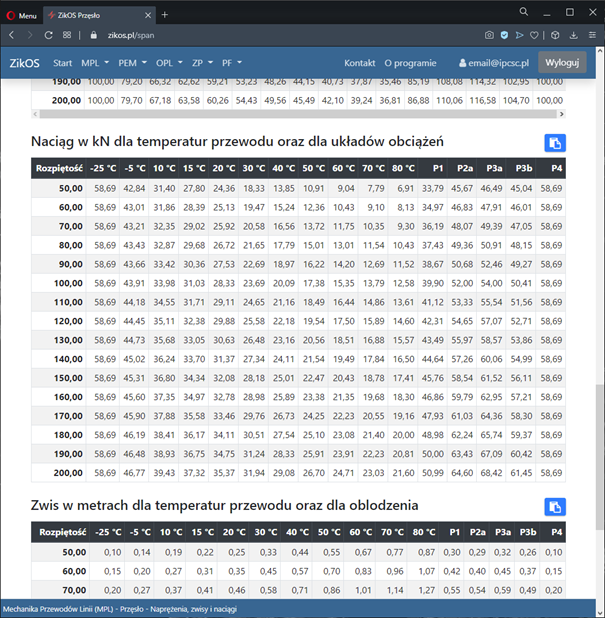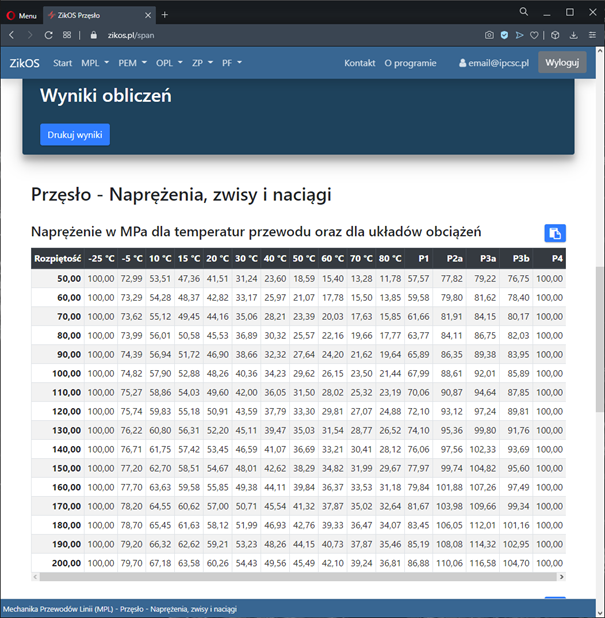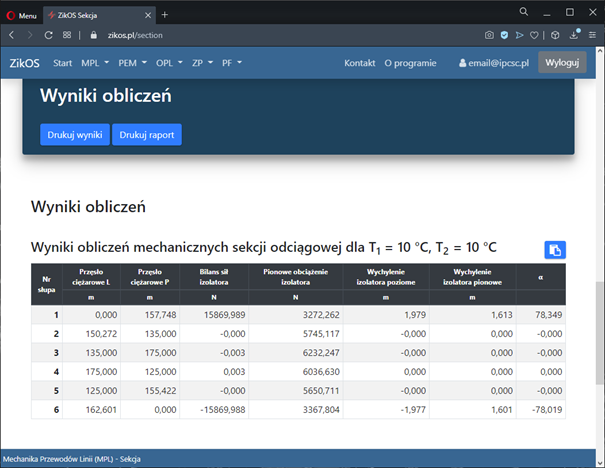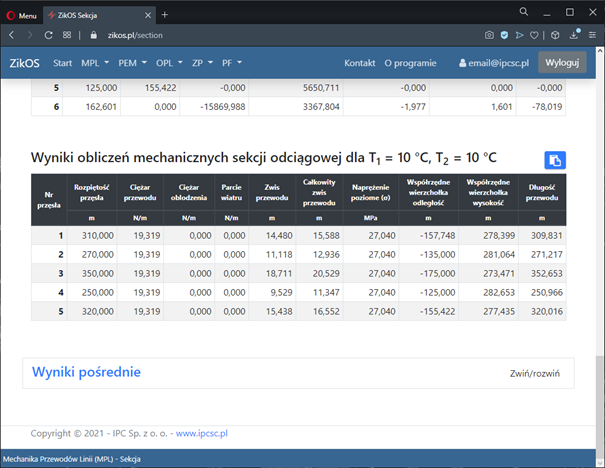The ZikOS program is used for a comprehensive analysis of the operating states of overhead power lines. The ZikOS system enables analysis of cable mechanics, line electrical parameters and line impacts on the environment. The developed solutions enable advanced analysis of the current line condition, effective design of new and modernized lines, and effective assessment of environmental threats related to their operation.
Wire mechanics
Performing calculations of stresses, sags and cable tensions in accordance with the standards:
- PN-E 05100-1:1998,
- PN-EN 50341-3-22:2010,
- PN-EN 50341-2-22:2016
and according to the parameters set by the User. Performing calculations taking into account non-linear stretching characteristics of cables, e.g. high-temperature cables (stresses, sags and EPE tensions). Full analysis of guy sections, taking into account asymmetric loads, insulator deflections, diagonal spans, etc.

The MPL module is designed to perform mechanical calculations of cables for:
- single span of line
- Span – Stresses, sags and tensions,
- Span – Stresses, sags and EPE tensions,
- Mounting board,
- a given section of the extraction line
- Section
Span – Stresses, sags and tensions
The Span Module uses the Linear Elastic Model for cables with linear stretching characteristics. The input data to the calculation module are the following parameters:
- Line identification – line name, section name
- Cable data – kind, type, cross-section, diameter, weight, thermal elongation coefficient, elastic elongation coefficient
- Climate zone:
- conditions from the selected standard (PN-EN 50341-2-22:2016 or PN-EN 50341-3-22:2010 or PN-E 05100-1:1998) or a manually set of conditions,
- ice load zones (S1, S2, S3, Sspec),
- wind load zones (W1, W2, W2),
- terrain category (0, I, II, III, IV),
- absolute height,
- height of cable suspension,
- Span – input data:
- basis for calculations (basic stress, basic tension, ice and wind load set by the User and set temperature),
- design stress,
- initial span,
- final span,
- calculation step.
The following tables are presented as the results of the calculations:
- stress for specific conductor temperatures and load systems
- tension for specific cable temperatures and load systems
- sag for specific cable temperatures and for icing
Mounting board
The input data to the calculation module are:
- Line identification – line name, section name,
- Cable data – kind, type, cross-section, diameter, weight, thermal elongation coefficient, elastic elongation coefficient,
- Climate zone:
- conditions from the selected standard (PN-EN 50341-2-22:2016 or PN-EN 50341-3-22:2010 or PN-E 05100-1:1998) or a manually set of conditions,
- ice load zones (S1, S2, S3, Sspec),
- wind load zones (W1, W2, W2),
- terrain category (0, I, II, III, IV),
- reliability level (PN1, PN2, PN3),
- absolute height,
- height of cable suspension,
- Equivalent span – input:
- basis for calculations (basic stress),
- design stress,
- type of overstress (none, temperature, sag value, cable length),
- component spans of the equivalent span
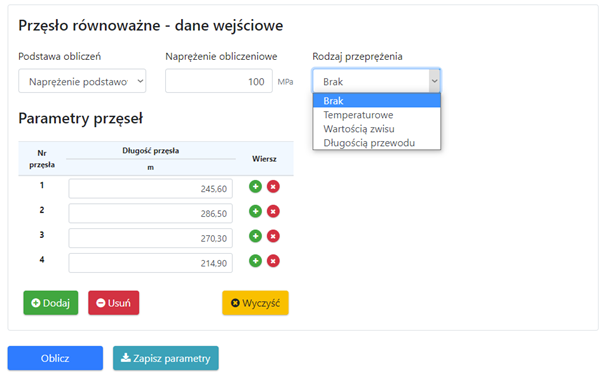
The following tables are presented as the results of the calculations:
- stress for specific cable temperatures,
- table of mounting sags for specific cable temperatures.

Section
The input data to the calculation module are the following parameters:
- Line identification – line name, section name,
- Cable data – type, type, cross-section, diameter, weight, thermal elongation coefficient, elastic elongation coefficient,
- Parameterization of calculations:
- initial stress H1,
- initial temperature T1,
- final temperature T2,
- Parameters of the extraction section:
- pole number
- position of the column base (horizontal and vertical coordinates),
- crossbar height,
- length and mass of the insulator,
- ice weight,
- wind pressure.
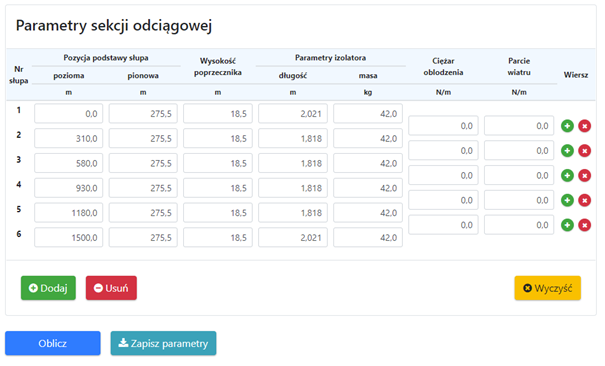
The following tables are presented as the results of the calculations:
- mechanical calculations for insulators,
- mechanical calculations for cables,
- intermediate results with analyzed coefficients.


